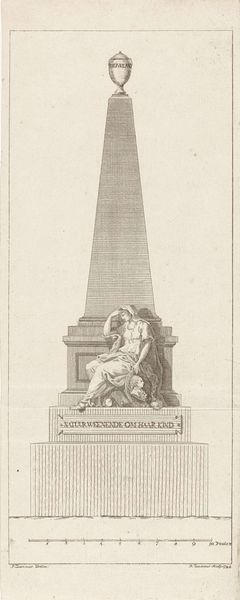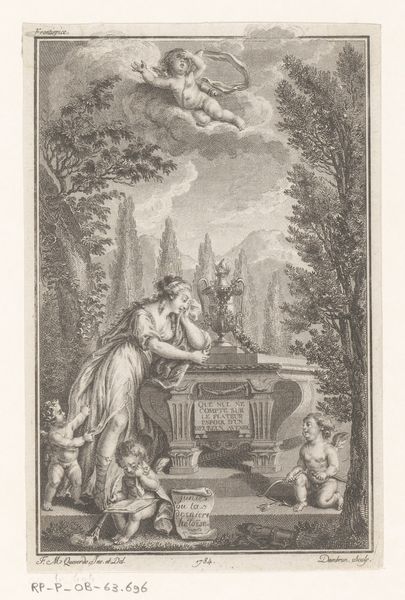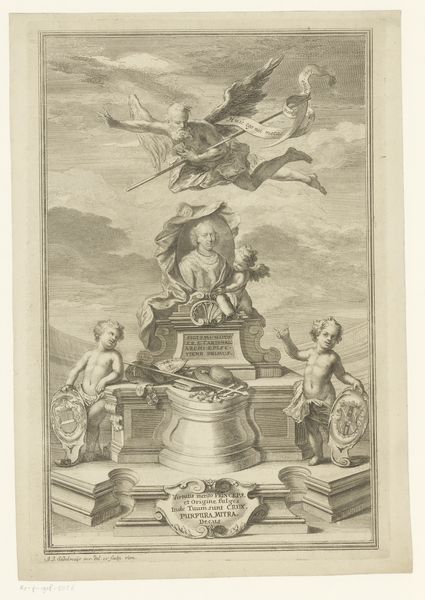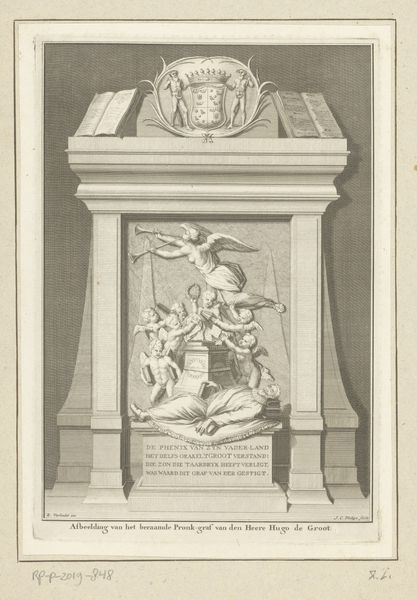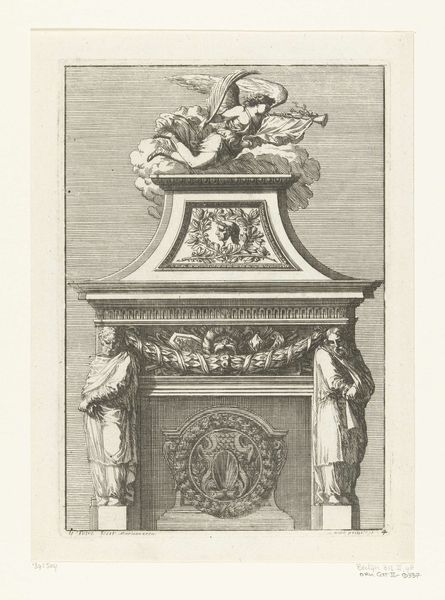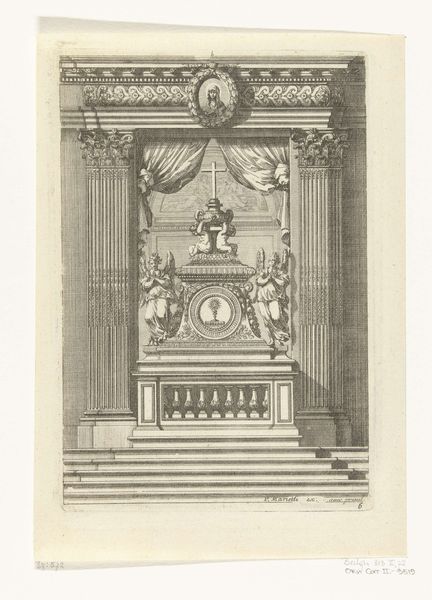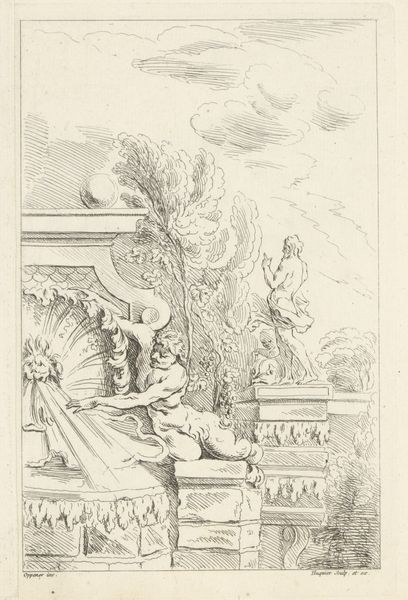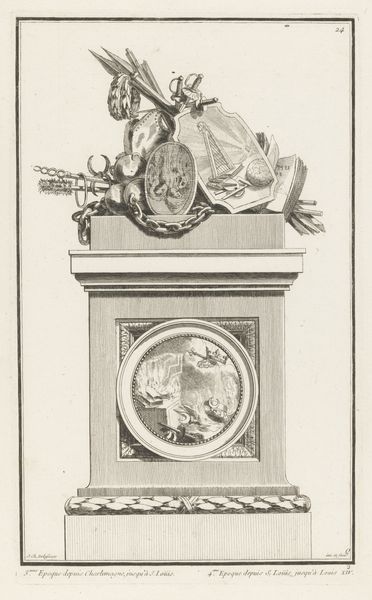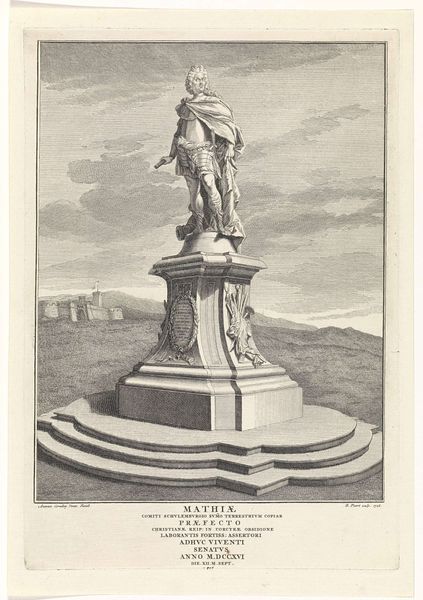
print, engraving, architecture
#
baroque
# print
#
engraving
#
architecture
Dimensions: height 198 mm, width 117 mm
Copyright: Rijks Museum: Open Domain
Curator: Frans de Bakker created this print of a "Monument voor Christian Furchtegott Gellert" sometime between 1736 and 1767. Editor: It feels like a somber memorial, stark against that cloudy sky. The etching work is incredible—the precision! And the children seem... precariously placed? Curator: Well, it depicts a column with a portrait medallion of Gellert himself. The column is crowned with an urn and topped by these three putti, common in Baroque commemorative art. Gellert, a professor of philosophy and poetry, was a significant figure in the German Enlightenment. Editor: I see the portrait now, almost hidden amongst all that texture. The composition, the pillar ascending to those tumbling figures – it directs the eye upward, towards something... transcendent, maybe? Yet, those cloudy skies offer a note of gravity to all the optimism. Curator: That's astute. Gellert's influence extended beyond academia; he advocated for social reform and his writings were highly influential. These prints circulated widely, fostering a sense of shared national identity and admiration for Gellert's values. Editor: So it functioned as a form of public art in a time before readily available photography, propagating his image and ideals. Even the texture seems significant – all those minute, rigorous marks, contributing to this immense final image! It evokes diligence, permanence, order... Curator: Exactly. This print not only memorializes him but also disseminated Enlightenment ideals within the broader society. Think of this work’s original setting; who had access to such things, how it circulated, and whose values it sought to uphold. Editor: Thinking of its formal choices and composition makes me also consider its persuasive aims: this isn't just a tribute. Its goal involves shaping public perception through very careful aesthetic orchestration. The artist doesn’t just show respect, but manufactures reverence through aesthetic form. Curator: Precisely, which really underscores how art functions within political and social dialogues. Editor: Well, examining the piece through both a formal and contextual lens has definitely amplified its complexity and power. Curator: Indeed; I think we both see a deeper sense of Gellert’s cultural legacy now.
Comments
No comments
Be the first to comment and join the conversation on the ultimate creative platform.


